Staying connected and keeping your teams engaged is more important than ever as we navigate new challenges during this COVID-19 pandemic.
Our MuleSoft/Salesforce executive teams recognized early on that in this time of crisis, it is critical to facilitate opportunities for employees to authentically connect with each other and prioritize wellness in order for them to continue producing great work. Here are five ways to keep employees virtually engaged, based on the MuleSoft marketing team’s month of work-from-home activities.
1. Emphasize empathy
We created our WFH engagement plan with a vision: emphasize the importance of mental and physical well being of every marketer, empowering each other to take the time and space to put families, loved ones, and ourselves first. This approach had critical top-down support, was communicated by our executive team, and was underscored by our fearless leader, Lindsey Irvine, CMO. As she reiterated in an email to the team, “Our customers and our business are certainly important, but we can only bring our best when we’re caring for ourselves as the number one priority.”
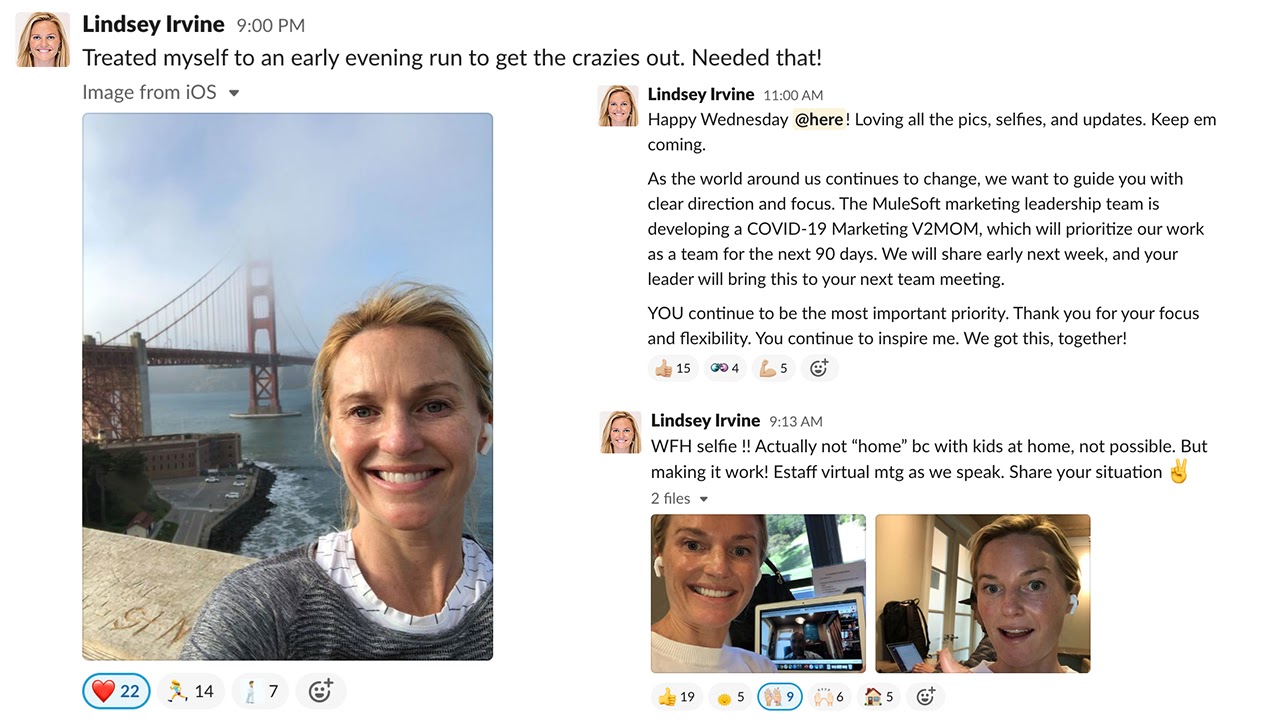
Tips: communicate the importance of connecting with teammates and managers 1:1, encourage video chats that aren’t about work topics, and start each team meeting with a check in on each others’ lives, asking about how best to support one another.
2. Stay true to your values
Keeping your staff connected to company culture can be challenging when everyone is working remotely and may have other pressing priorities, from caring for loved ones while balancing work with homeschooling children to managing co-working spaces with partners or roommates.
Our marketing team continues to execute on culture initiatives despite new COVID-19 constraints by using our core values as a guiding North Star. We’ve stayed aligned to culture pillars with intention, creativity, and reimagined experiences, setting the right tone for employees to participate and feel empowered to contribute. More tactically, we’ve dedicated a Slack channel to peer shout-outs, have suggested virtual volunteer opportunities, scheduled recurring virtual group workouts, continue to search for great candidates for our open roles, and look to our leaders exemplifying work/life harmony for the rest of the organization to follow.
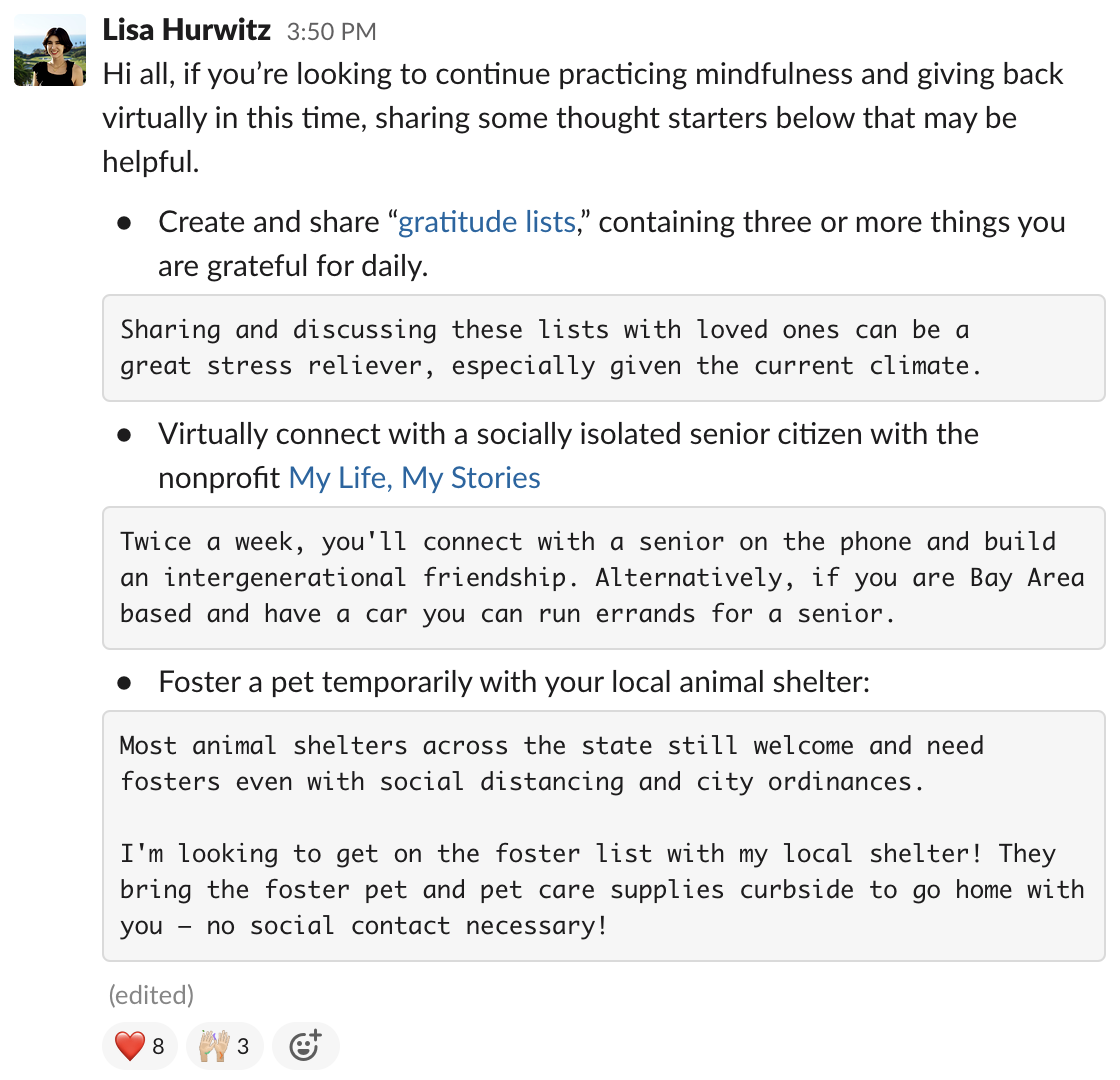

Tips: continue reiterating the importance of your culture and values, research and encourage virtual opportunities that align to them, and prioritize activities with the most culture value-add.
3. Leverage your instant messaging platform
We take for granted the culture and community that organically grows in workspace environments — until all our conversations have to suddenly shift online! So how can you simulate that “water-cooler talk” to keep building camaraderie within your team, especially during these trying times?
With Muleys across time zones adapting to new ways of living, we’re leaning on our marketing team Slack channel now more than ever before. Not only are we over-communicating about our team’s modified priorities, we’re also sparking fun conversations with weekly “challenges,” tagging fellow teammates to participate and pass the virtual baton. Example Slack activities we’ve done are #WinsOfTheWeek, #TellMeSomethingGood, team trivia via Slack Polly polls, and WFH selfies, which prompted an entirely new, employee-driven “Mutts of MuleSoft” Slack channel.
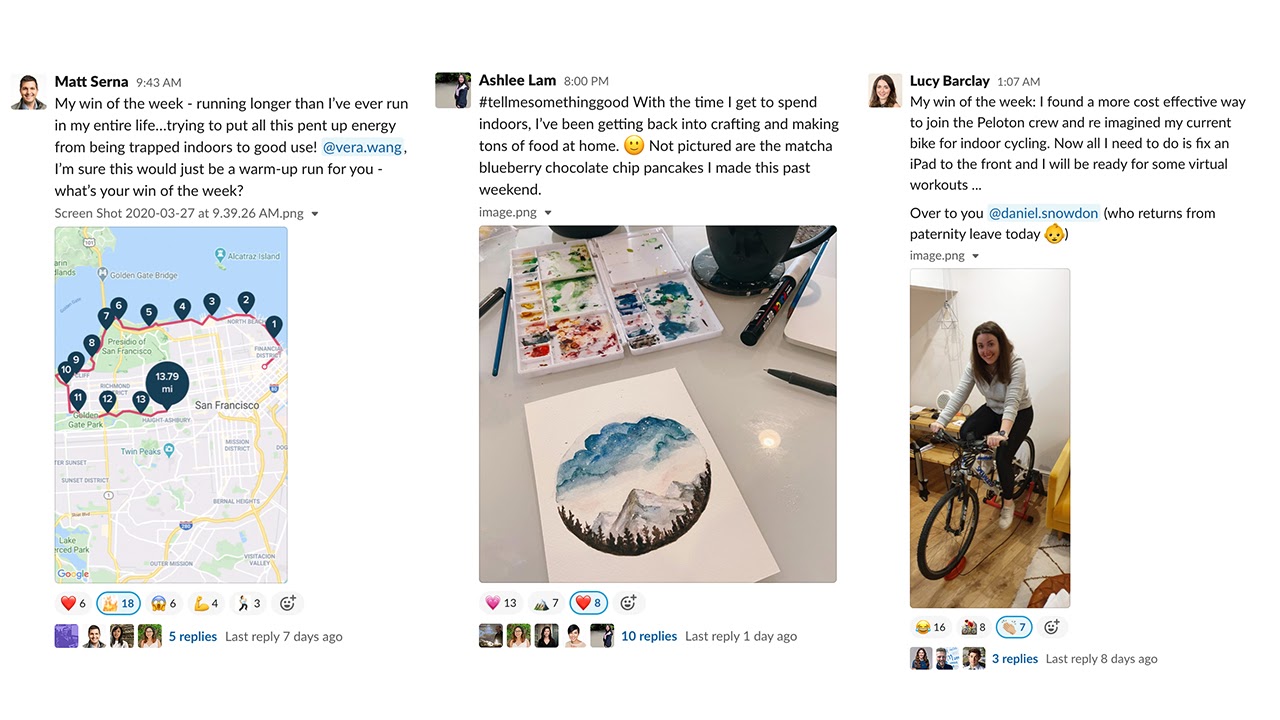
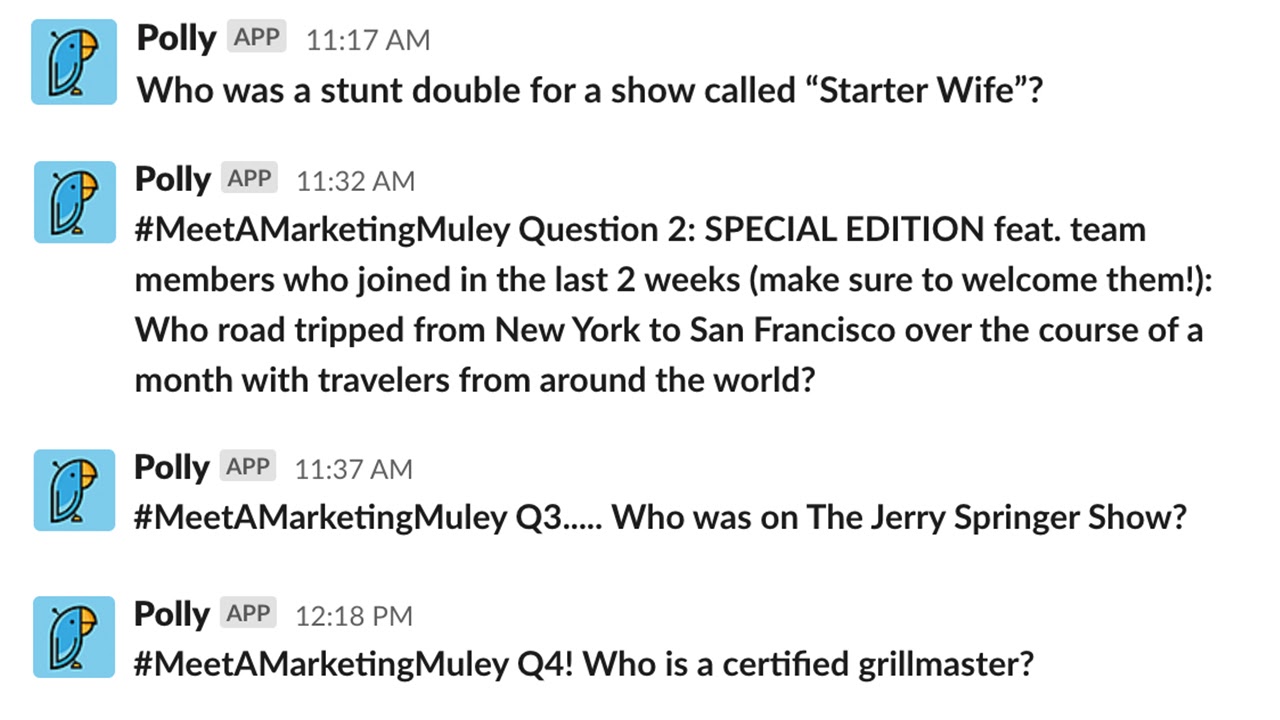
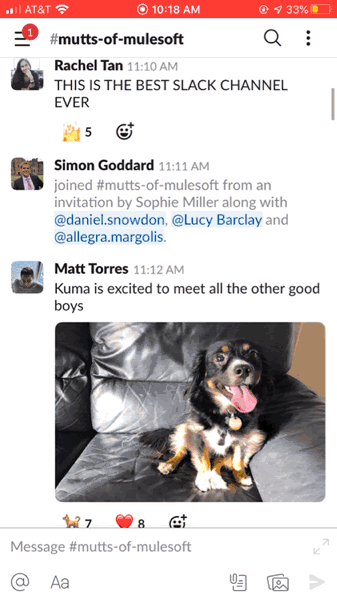
Tips: brainstorm activities that can be done via chat so teammates in different time zones can still participate, develop a calendar with prompts for the coming weeks, and find enthusiastic champions to keep rallying behind your program so engagement doesn’t drop off.
4. Host virtual events
Apps like FaceTime, Zoom, Houseparty, Skype, and beyond are growing in popularity as people turn to video chats for face-to-face socializing in light of social distancing mandates. To help maintain human interaction, we continue to host our regular company-wide and all-marketing All Hands meetings.
In addition to those mandatory business meetings, we started scheduling optional, more intimate events to facilitate quality time together, such as virtual workouts, happy hour and team lunches — organizing the Marketing team into randomized, smaller groups with an option to expense lunch to also help support local businesses. For the small-scale virtual events, we’ve suggested setting up Zoom meetings to take advantage of virtual backgrounds and gallery mode.
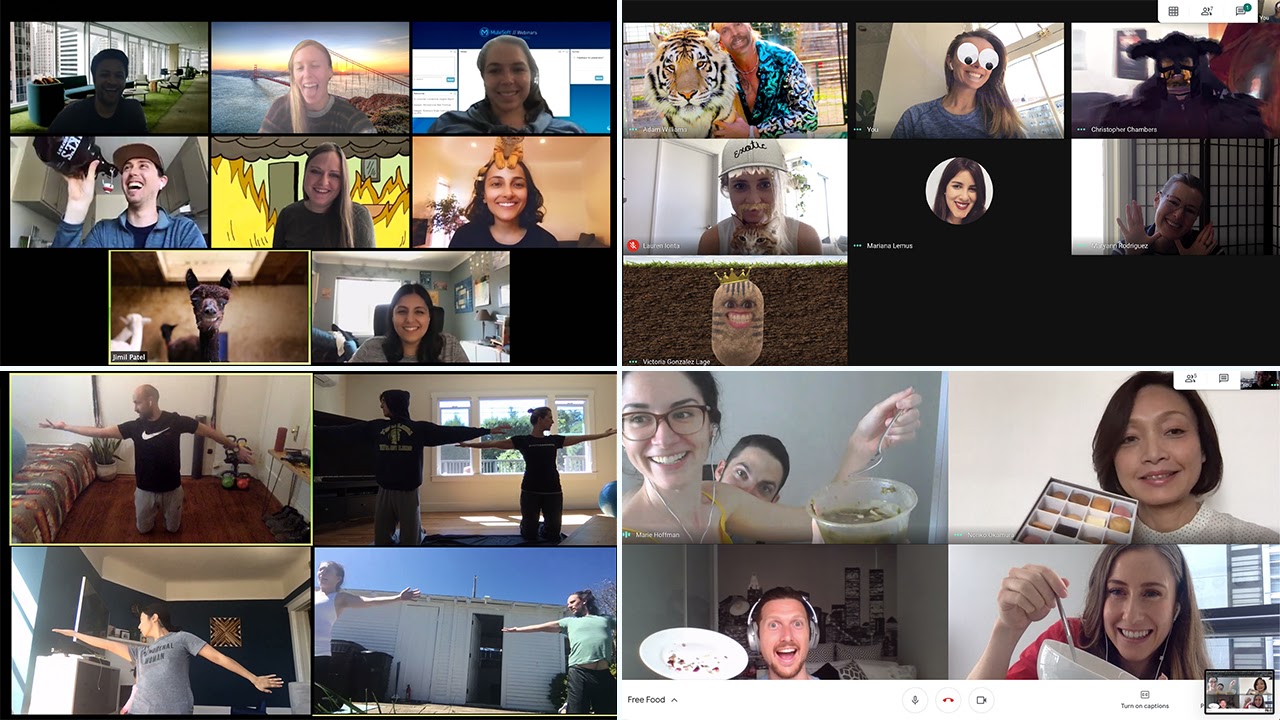
Tips: put employees’ best interests at the center of your virtual events, consider your event’s value-add (or lack thereof), and keep in mind that not everyone is working on the same schedule or has the bandwidth to join every meeting, so record and share the mandatory ones whenever possible.
5. Focus on helpfulness
In this time of uncertainty, your employees may feel stressed, overwhelmed, anxious, or distracted. Being mindful that employees are not operating under “business-as-usual” circumstances should be a central component in your plans for engaging them. The key is to focus on activities and content that are entertaining, thoughtful, and digestible.
Somewhere in the organization, a “Sanity Savers” document was created, full of crowdsourced lists of free online workouts, recommended TV shows, movies, books, board games, virtual experiences (famous museum tours, Netflix Watch Party app, live animal webcams, etc.), and more, so we shared it out and contributed to it. Those of us who are parents with young children at home have been exchanging anecdotes about how we’re managing, and many employees are proactively sharing general WFH tips. Finally, our team implemented COVID-Fridays, meaning no meetings after 1 p.m. as we head into weekends.
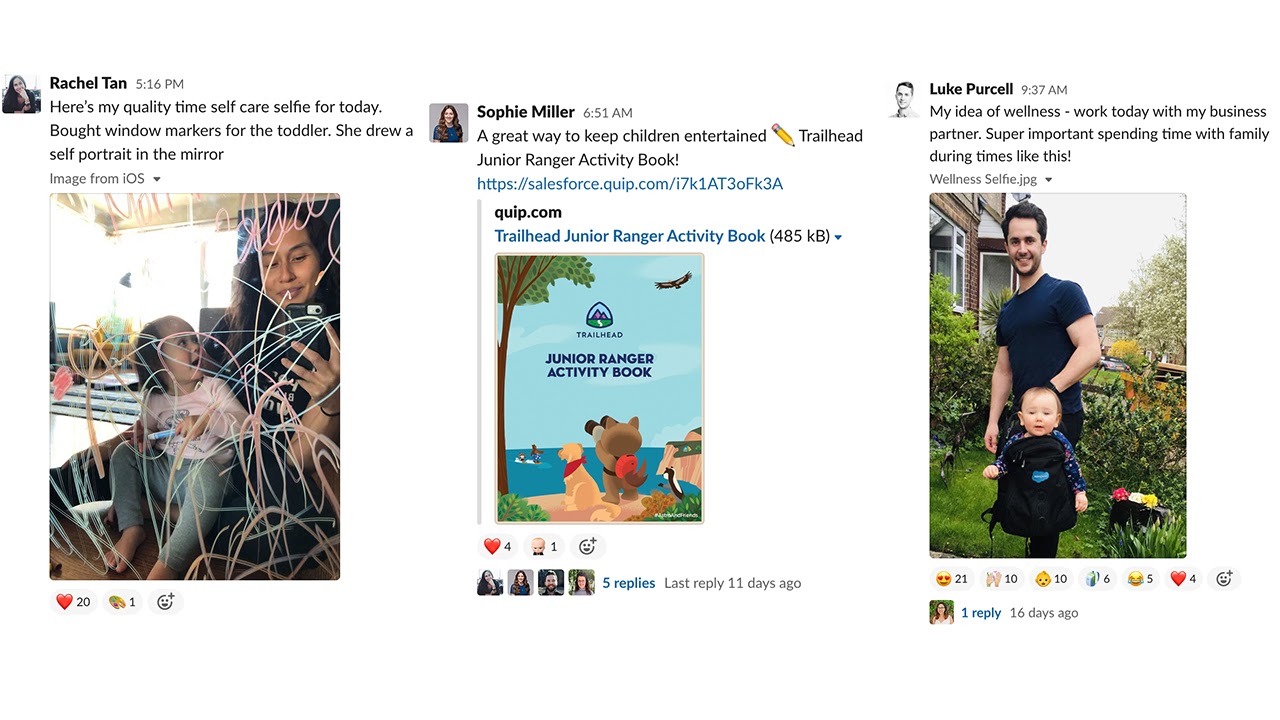
Tips: crowdsource ideas, collect feedback, continue enhancing your plan, and amplify/support activities your team has organically spurred up on their own.
Keeping our employees productive and engaged at work has always been a top priority, but taking the friction out of work and facilitating connections in this crisis is paramount. I hope these tips are helpful as your organization navigates this challenging time.
As mentioned above — we have tons of resources on how to stay sane and stay fit while working from home in our Sanity Savers document. Feel free to check it out to help you and your loved ones stay safe and sane!









